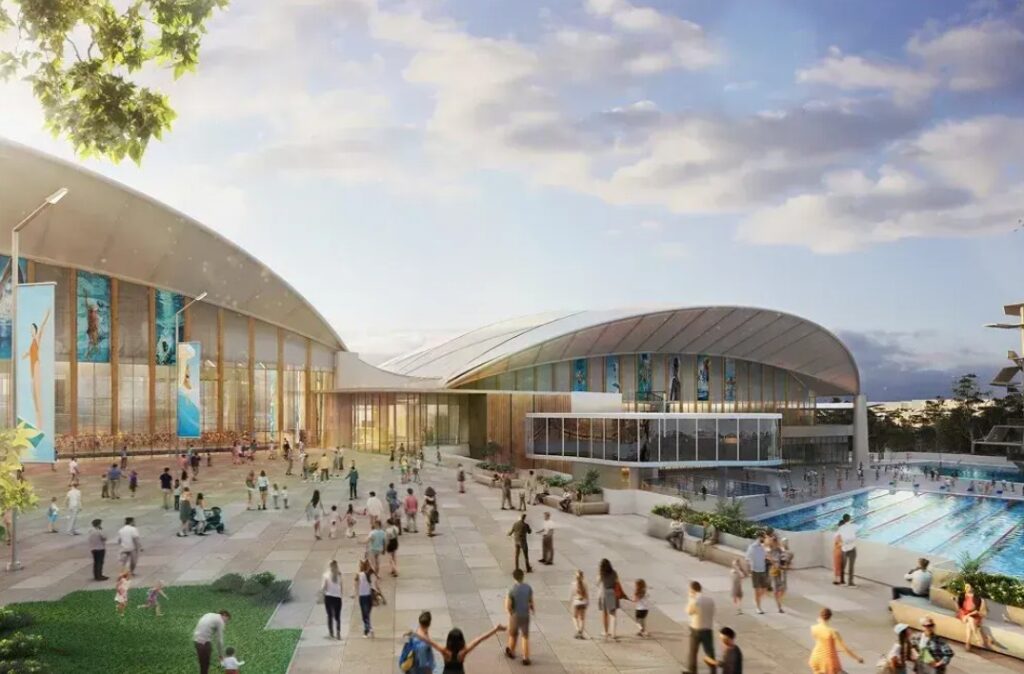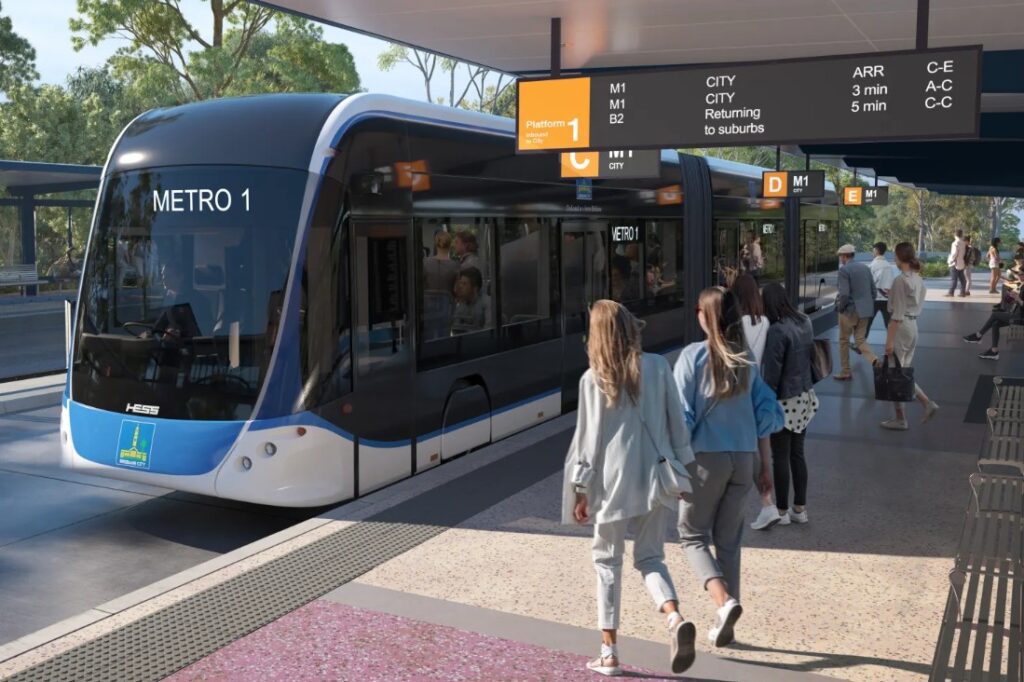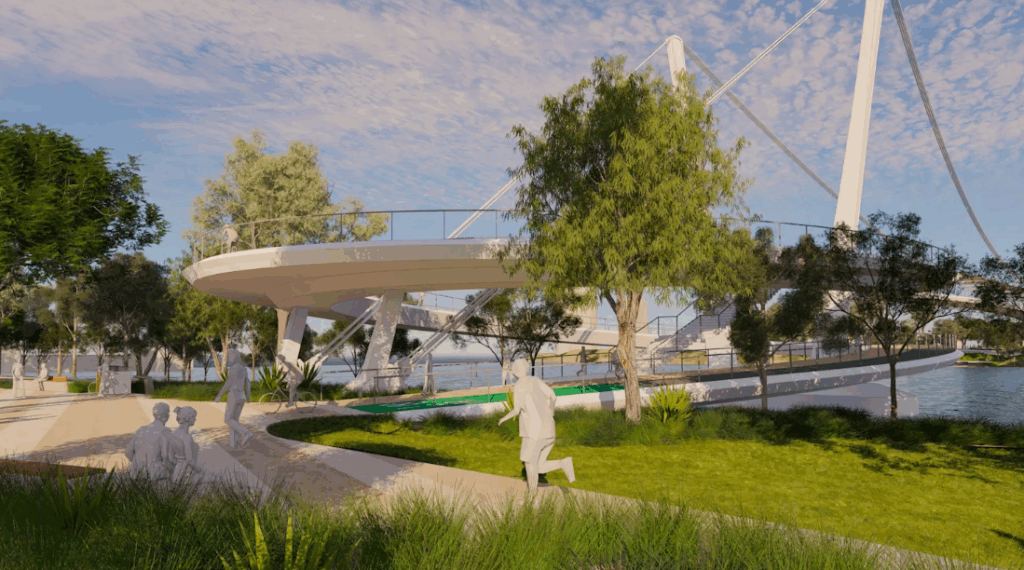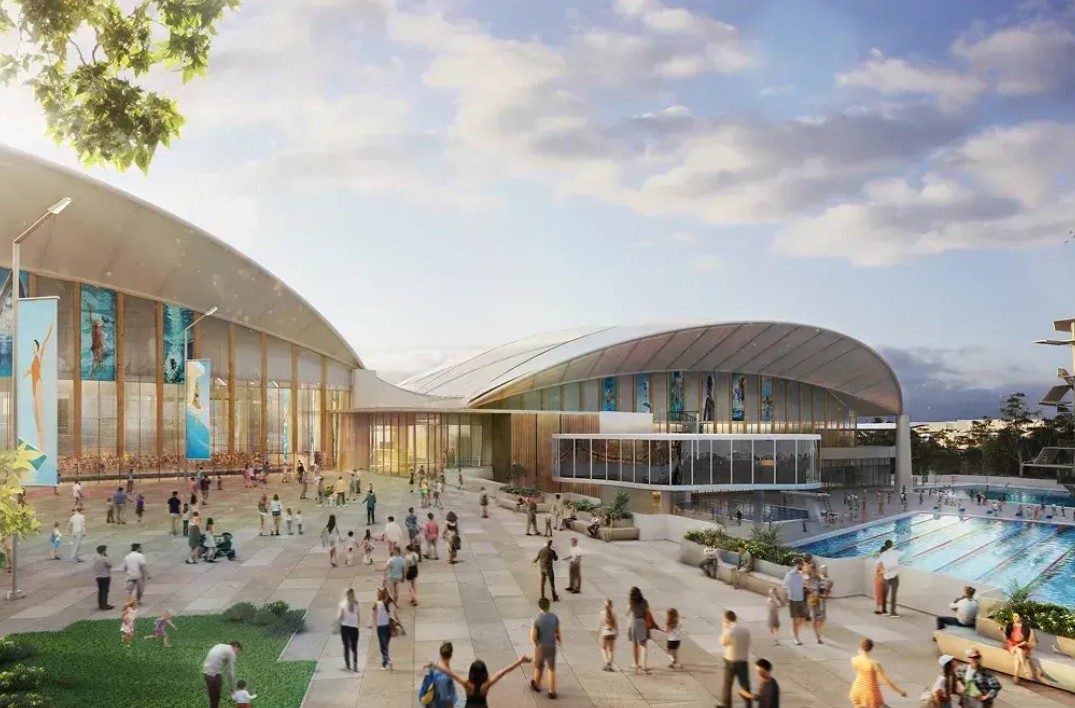As Brisbane prepares to accommodate for the 2032 Olympic Games, the city is experiencing an unprecedented surge of infrastructure investment. What began as a preparation for a global sporting event has evolved into a citywide transformation, extending as far as the Moreton Bay region. The widespread implementation of Brisbane infrastructure projects will reshape how locals live, work, commute, and invest.
With billions of dollars committed to projects designed to boost connectivity, liveability, and long-term economic growth, Brisbane’s property market is well-positioned for continued upward momentum.
Let’s explore some of the key infrastructure developments revitalising the Brisbane landscape—and what they mean for buyers and investors in the years ahead.
Brisbane Arena: From Olympic Flagship to Private-Sector Pivot

Once slated to host the 2032 Olympic swimming and water-polo finals, the Brisbane Arena has been dropped from the publicly funded Games program. In March–May 2025, Premier David Crisafulli accepted an independent 100-day review that:
- Scrapped the $2.5 billion government spend on a 17–18 k-seat arena above Roma Street Station, and
- Redirected federal and state dollars to a new 25 000-seat National Aquatic Centre at Spring Hill’s Centenary Pool site, now the confirmed Olympic swimming venue.
The National Aquatic Centre will become one of the largest-scale aquatic centres in Olympic history. After the Games, it will continue to function as an 8,000-seat competition and training venue for Australia’s elite aquatic athletes.
Key Impacts on the Property Market
According to LJBA Principal & Lead Buyer’s Agent Lauren Jones:
- Surge in owner-occupier and premium apartment demand in Spring Hill, while short-stay operators eye athlete-village-style rentals.
- If the private arena lands at the GoPrint site, renewed investor interest, similar to pre-Gabba-Stadium uplift, is expected
- Premium-unit squeeze: limited A-grade stock in Spring Hill/Herston is already prompting developers to land-bank, pointing to scarcity-driven price premiums
According to Harcourts Pinnacle Aspley’s Sales Consultant Brad Shipway:
• Significant increase of interest from trades, labourers, and white-collar workers, who are seeking proximity to major projects and the work available
• More businesses may reconsider their headquarters’ locations in Brisbane to cater to the new wave of both blue- and white-collar workers
Brisbane Metro: City-Transforming Transit Solution

The Brisbane Metro is a fully electric, high-frequency public transport system rolling out in 2025. Services on the first line (M2: between Royal Brisbane & Women’s Hospital and UQ Lakes) began permanent operations on 28 January 2025, while the second line (M1: between Eight Mile Plains and Roma Street) launches with Brisbane’s new bus network on 30 June 2025. Together, the two routes slash inner-city travel times and ease long-standing bus-way congestion.
This ~ $1.55 billion project will field a fleet of 60 bi-articulated electric “metros” and see 18 stations upgraded or newly built—plus the Adelaide Street tunnel coming online late 2025, which will dramatically reshape how residents move around the city.
Key Impacts on the Property Market
According to LJBA Buyer’s Agent Jessy Clifton:
• Transit-rich suburbs like South Brisbane, West End, Woolloongabba and Dutton Park are already seeing heightened buyer interest
• Improved turn-up-and-go services boost proximity-based demand from students, health sector professionals and renters
• Suburbs along both corridors benefit from five-minute peak frequencies and 24-hour weekend service, lifting reliability perceptions
• Enhanced public transport is driving premium appeal for professionals and downsizers seeking car-light lifestyles
• Units and townhouses in Metro-connected catchments are poised to outperform, thanks to rising rental yields
• Flow-on investment in nearby retail, dining and lifestyle precincts is expected as foot traffic intensifies around upgraded stations
According to Brad Shipway:
• Improved transport infrastructure will make Brisbane more accessible for workers and residents alike, with more professionals relocating for job opportunities
• Better transit options will be key in attracting skilled workers and commuters, especially from surrounding regions
Cross River Rail: Brisbane’s Underground Revolution
One of Brisbane’s largest infrastructure undertakings, the $17 billion Cross River Rail project includes a 10.2-kilometre rail line featuring a 5.9-kilometre twin tunnel beneath the Brisbane River and CBD. Four brand-new underground stations—at Boggo Road, Woolloongabba, Albert Street, and Roma Street—will be complemented by station upgrades and expanded rail services across southeast Queensland.
Expected completion: 2029.
Key Impacts on the Property Market
According to LJBA Buyer’s Agent Associate, Dario Rodrigues:
- Accessibility-driven demand in suburbs like Woolloongabba, Dutton Park, and East Brisbane
- Strong investor momentum near Albert Street Station, the new commercial heart of Brisbane
- Major uplift in long-term rental yield for inner-south Brisbane properties
- Price appreciation due to seamless connections with the wider SEQ rail network
- Inner-city gentrification as infrastructure unlocks underutilised pockets
According to Brad Shipway:
• Increased accessibility and promotion of better job prospects—especially with the expected influx of white-collar workers drawn to Brisbane’s expanding infrastructure
Green Bridges: Connecting Communities Sustainably

Brisbane’s commitment to sustainable living is evident in its Green Bridges Program—including completed bridges from Kangaroo Point to the CBD and Newstead Park to the Lores Bonney Riverwalk, and still-to-be-constructed bridges from Toowong to West End, and from St Lucia to West End. These pedestrian and cyclist-friendly structures are reducing car reliance and increasing connectivity across the river.
Key Impacts on the Property Market
According to Jessy Clifton:
- Walking and cycling proximity increases property appeal in inner-ring suburbs
- Kangaroo Point, West End, and Toowong are expected to see strong capital growth
- “Green connectivity” is a growing must-have among younger buyers and families
- Waterfront properties near green bridges are enjoying renewed interest
- Enhanced liveability and low-emission lifestyles are raising suburb profiles
- Walkability is becoming a critical factor in buyer decision-making
According to Brad Shipway:
• Reduced traffic congestion, aligning with the Olympics’ sustainability goals
• Increasing accessibility by foot or bike and prioritised eco-conscious living will attract more young buyers and renters to inner-ring suburbs
Why Now Is the Time to Buy in Brisbane

In the words of Lauren Jones:
“Brisbane has a clear upward trajectory. The major investment in Brisbane infrastructure projects has set the stage for strong property performance over the next decade. We’re seeing interest from interstate and international buyers rise in anticipation of the Olympics — but it’s the permanent lifestyle and connectivity upgrades that will continue to drive demand long after 2032. Now is the time to get in.”
So, whether you’re looking to invest, buy your first home, or upgrade to a lifestyle property, Brisbane is primed for extraordinary growth.
At LJBA, we’ve helped clients secure strategic assets all over Brisbane—from the inner city to emerging northern and southern corridors. We know the growth zones, the infrastructure timelines, and the right time to buy.
Reach out today to partner with a team that can help you secure your dream property with precision, strategy, and confidence. Brisbane’s next chapter is already underway — don’t miss your chance to be part of it.

